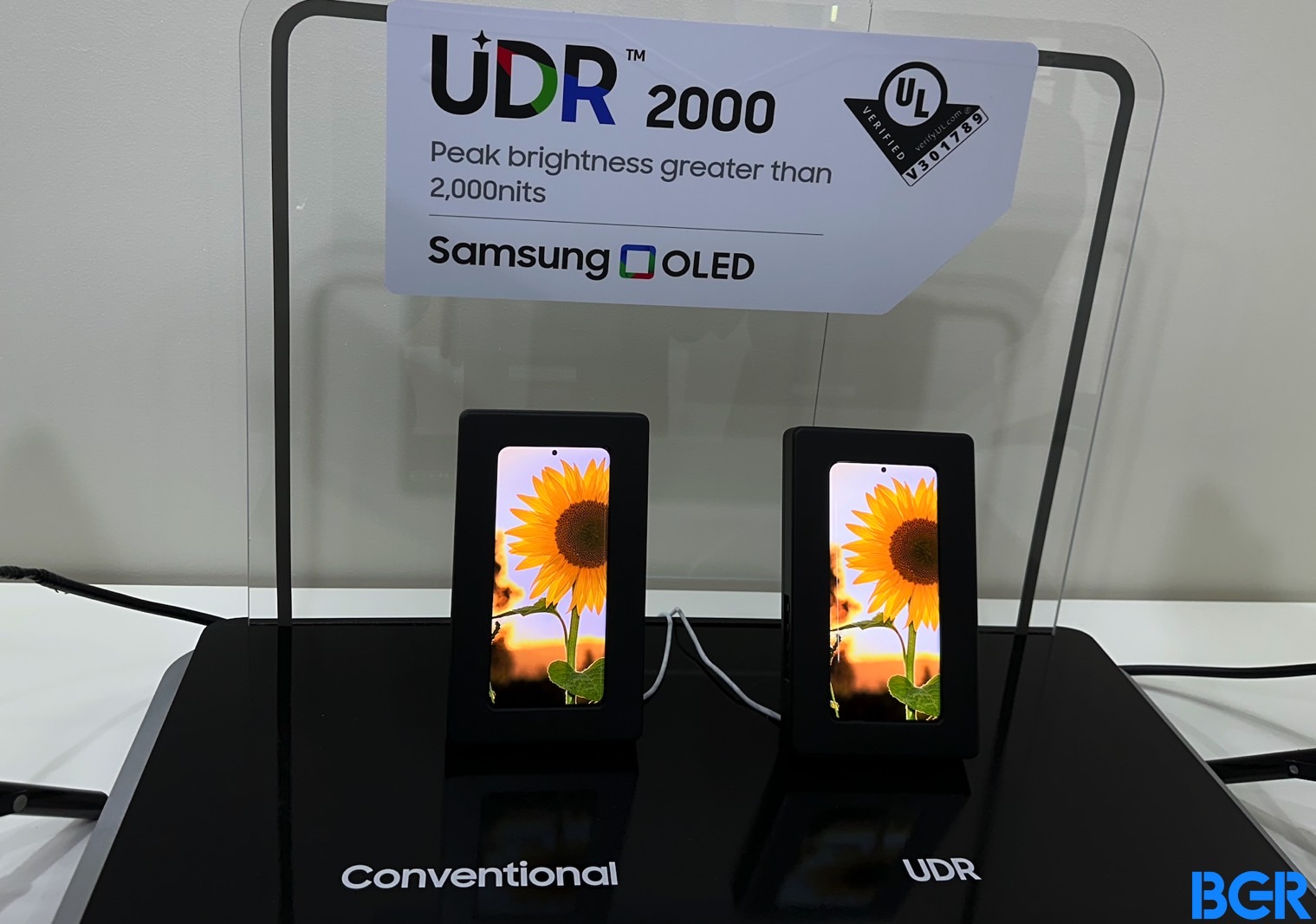Samsung had a more quiet MWC 2023 event when it comes to consumer products. The company unveiled the Galaxy S23 series in early February, choosing to skip a reveal in Barcelona for one more year. Apple, meanwhile, never attends these trade shows in an official capacity. Yet the next-gen Samsung displays that might equip phones like the Galaxy Z Fold 5, Galaxy S24 series, and iPhone 15 quietly showed up in Spain.
Foldables were a big theme at this year’s MWC show. Honor launched the international variant of the Magic VS at the show. Much lesser-known Chinese vendor Tecno developed a Z Fold 4 lookalike called Phantom V Fold that doesn’t feel cheap, yet it retails for the same price as an iPhone 14 Pro Max. Oppo brought its latest Find N2 smartphones, and so did Samsung.
Sure enough, Samsung demoed the durability of its Ultra Thin Glass tech at the show but not at its main booth. Instead, the Korean giant’s Samsung Display arm had its own corner to show off Samsung’s OLED panels. That’s where I found some of the interesting foldable screen concepts we saw from Samsung in recent years. And this wasn’t the Galaxy Z Fold 5’s next-gen glass either (see the Flex S models above).

When I asked what was new, a Samsung rep showed me the panels above. On the left, we have an unfolded Galaxy Z Fold 4 showing a Word document to demonstrate the UPC tech, short for under-panel camera. That’s the camera Samsung placed under the screen of the foldable screen.
Next to it, however, Samsung demoed something new, the UPC Plus tech. What’s the difference between them? Well, the UPC Plus has even more pixels covering the camera. That higher resolution should make the UPC camera even less visible. You can still see it, though.
The UPC Plus is the kind of tech we’d expect from the Galaxy Z Fold 5 this summer.


Other foldable handset makers could use the technology, as Samsung also sells these components. But the Galaxy Z Fold 5 is the most likely device to feature UPC Plus tech, considering its competitors haven’t used under-panel cameras.
Samsung didn’t stop there. It also brought its new Ultra Dynamic Range (UDR) OLED panel to MWC. The UDR screen on the right in the following image has a peak brightness greater than 2,000 nits. And Samsung advertises an “excellent ultra high brightness of 1,500/2,000 nits.”

The screens came in ugly enclosures. But otherwise, they look like the kind of hole-punch screen you can expect on the Galaxy S24 phones next year. Samsung would be the main beneficiary of its Samsung Display tech.
But Samsung’s main OLED panel buyer continues to be Apple. And the iPhone has always had the best OLED screen possible since the company started the switch.
There’s no way to confirm that the iPhone 15, or one of its successors, will feature the new UDR OLED panels from Samsung. But if the Korean giant is ready to showcase and mass-manufacture the screen, then Apple must be one of the buyers it’s pitching these screens to.
Don’t let the hole-punch design fool you, either. Samsung Display can manufacture OLED panels with Dynamic Island cutouts or traditional iPhone notches. Also, we’ll note that rumors earlier this month said the iPhone 15 Pro Max could feature a peak brightness bump of 2,500 nits.
All of this is speculation, of course. The on-site Samsung reps could not confirm what devices will get these screens.







